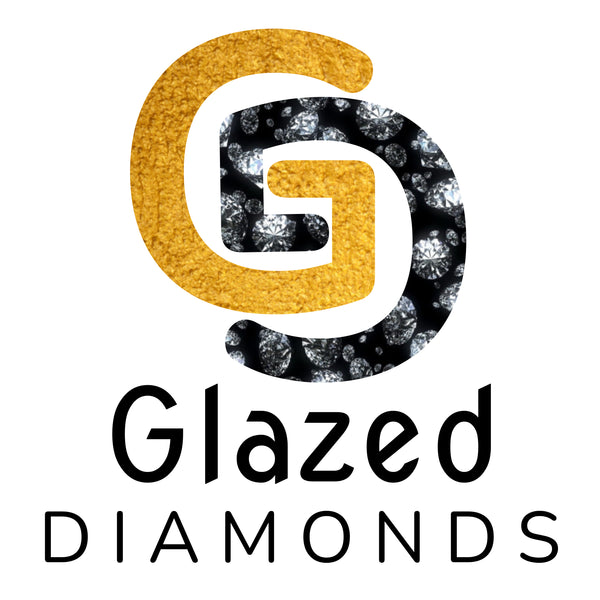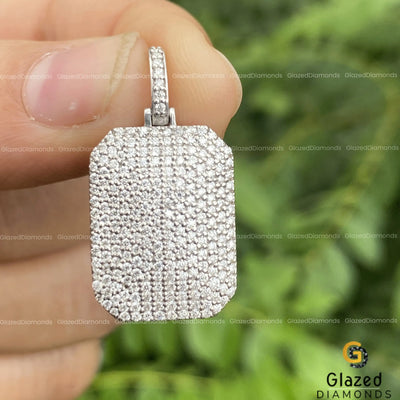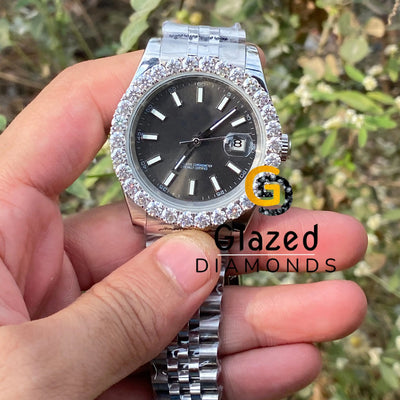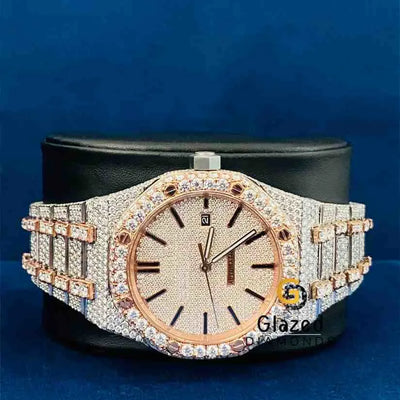We get this a lot: “Is Chinese moissanite bad?” and “Is American moissanite better.” Short answer: country on the label does not decide beauty on your wrist. Growth control, cutting, matching, and honest QC decide that.
Let us walk through this in clear, so you see what actually matters when you buy iced watches.
Why People Compare Chinese and American Moissanite
Most moissanite rough and finished stones come out of advanced factories in China and a few other hubs. American moissanite in many cases means:
-
Branded, graded, cut, or finished by a company based in the US.
-
Stones grown overseas that are then handpicked, graded, and sold under a branded name.
So the label can mix location and branding.
“Chinese moissanite” often gets used online as a lazy way to say “cheap” or “fake.” That is not accurate by default. You get top tier and weak stones in both routes.
We care less about flags, more about proof.
>What Actually Controls Moissanite Quality
Use this list instead of country bias.
1. Growth Quality
High quality moissanite needs:
-
Clean inputs with tight control on impurities.
-
Stable high heat and slow, steady growth.
-
Easy cooling that avoids stress lines.
Good Chinese factories can do this. Some American branded lines select from those. Weak suppliers in any region rush runs and ignore stress. That is when you see haze, milkiness, or odd color.
2. Cutting and Polish
Even the best rough looks average if the cut is lazy.
Look for:
-
Symmetry: facets meeting clean, no random angles.
-
Bright table that does not look washed.
-
No dead zones when you tilt the stone.
-
Slick polish, no draggy lines.
Cutters work in several countries. A strong process will inspect each stone, not just trust origin.
3. Color Control and Matching
For watches, this is huge. You need:
-
Tight color band across the bezel.
-
No random warm stone in a sea of cool stones.
-
Moissanite that holds tone in real light, not only in studio shots.
Quality lines match lots carefully, no matter where the rough started.
4. Honest Grading and Testing
Real comfort comes when the brand:
-
States grade and color in simple terms.
-
Shows that moissanite passes a tester on key zones.
-
Uses real stainless steel, not soft base metals.
If a seller leans on “American” only as proof and still hides specs, that label does not save the watch.
>Chinese Moissanite: What You Need to Know
When you see “Chinese moissanite” on forums or in product text, ask:
Are we talking about:
-
Well known factories with strong control that supply many brands.
-
Or random no name stones with no grading or trace.
Chinese makers cover the full range.
Pros when you pick right:
-
Modern tech, consistent sizes, strong fire.
-
Good value per carat.
-
Large supply for matching in bezels and pavé.
Risks when you pick random:
-
Over-bleached stones that look harsh.
-
Cloudy or mixed color stones.
-
Loose QC that lets chipped or off-cut pieces into bulk.
For you as a buyer, the answer is not to fear Chinese moissanite. The answer is to fear missing specs.
>American Moissanite: What That Often Means
Many times, “American moissanite” is:
-
Rough or pre-cut stones sourced globally.
-
Branded, certified, or finished under a US based company.
-
Backed by specific grading and warranty terms.
Strong points:
-
Clear grading reports.
-
Strong marketing and support channels.
-
Easy to understand policies.
Possible catch:
-
You might pay more for the name, not always for a visible jump in beauty, especially in small stones on a watch bezel.
So again, do not trust only the word American. Trust the documents and how the stones look in real light.
>Red Flags That Matter More Than Origin
If you see any of this, it is a no, no matter which country shows on the page.
-
Only “diamond like stones” in a watch listing, no word moissanite.
-
No steel grade.
-
No carat range, no clarity note, no color info.
-
One or two soft photos, no clear close ups.
-
Strange “lifetime” promises with no clear rules.
If a seller shouts “not Chinese” but will not share clear details, do not treat that as better.
>How to Compare Two Watches Side By Side
Forget labels for a minute. Use this simple test on any two moissanite watches.
-
Check the bezel in natural light and indoor light. Which one looks even and bright?
-
Zoom in on stones to check whether they are aligned. Any gaps or glue shine.
-
Feel the case and bracelet. Heavy and solid or hollow and noisy.
-
Read the product text and read dial size, steel grade, movement, and moissanite grade clearly.
-
Look whether the warranty explains coverage in plain language, not just slogans.
How We Choose Moissanite at Glazed Diamonds
We do not pick moissanite just because they come from one country. We pick by performance.
Our process:
-
Work with trusted producers who keep tight control on growth and color.
-
Reject lots that show haze, odd tones, or weak cuts, even if the price looks nice.
-
Use VVS, near-colorless stones for our iced watches so bezels read clean under flat glass.
-
Test stones on sample builds and check how they look in real light, not only in edited shots.
-
Back builds with clear specs and support in simple English.
So yes, we use only genuine supply chains. We also filter hard. What reaches your wrist is not “random moissanite.” It is curated stock that meets our standard.
>Conclusion
Use “Chinese moissanite” and “American moissanite” as starting tags, not final verdicts.
Ask for proof, check photos and feel weight. Also, don’t forget to check the warranty. A good moissanite watch will survive those tests without stress.
If you want moissanite watches that already passed those tests, Glazed Diamonds is here. We handle the hard sorting, work only with trusted supply, and show you honest details so your decision feels easy.
>










